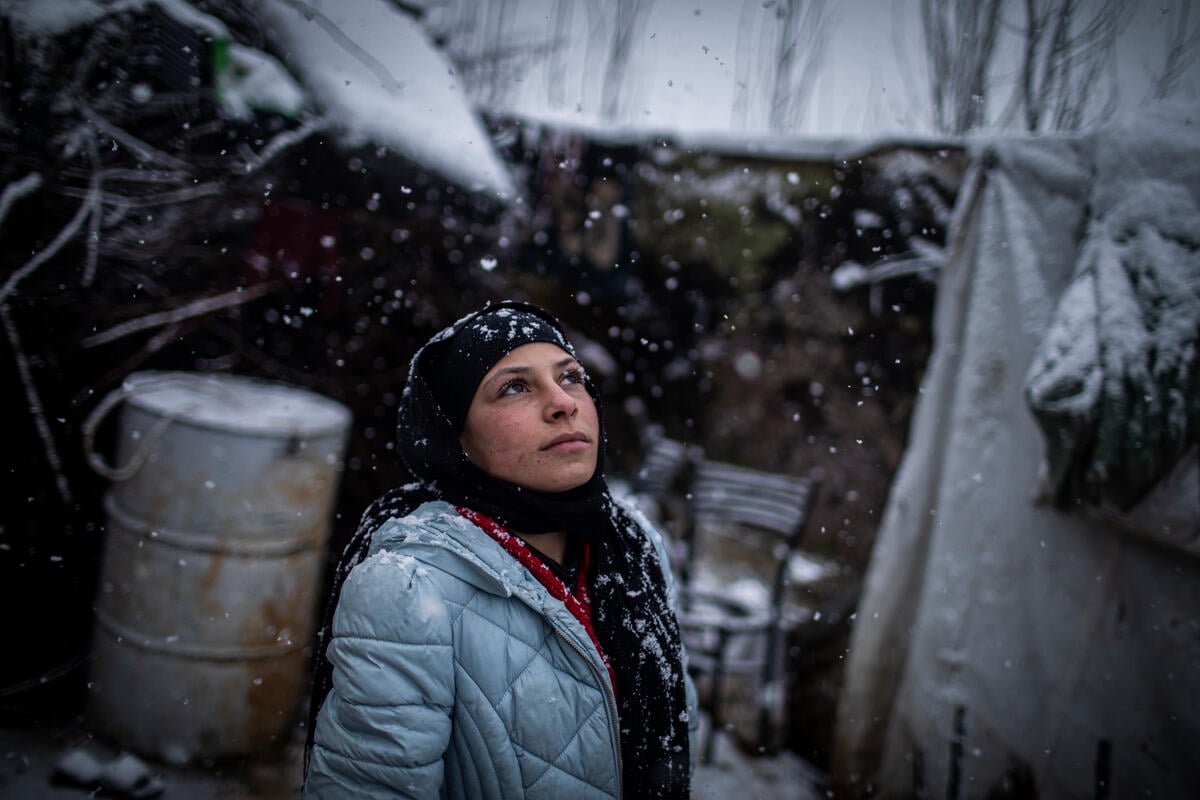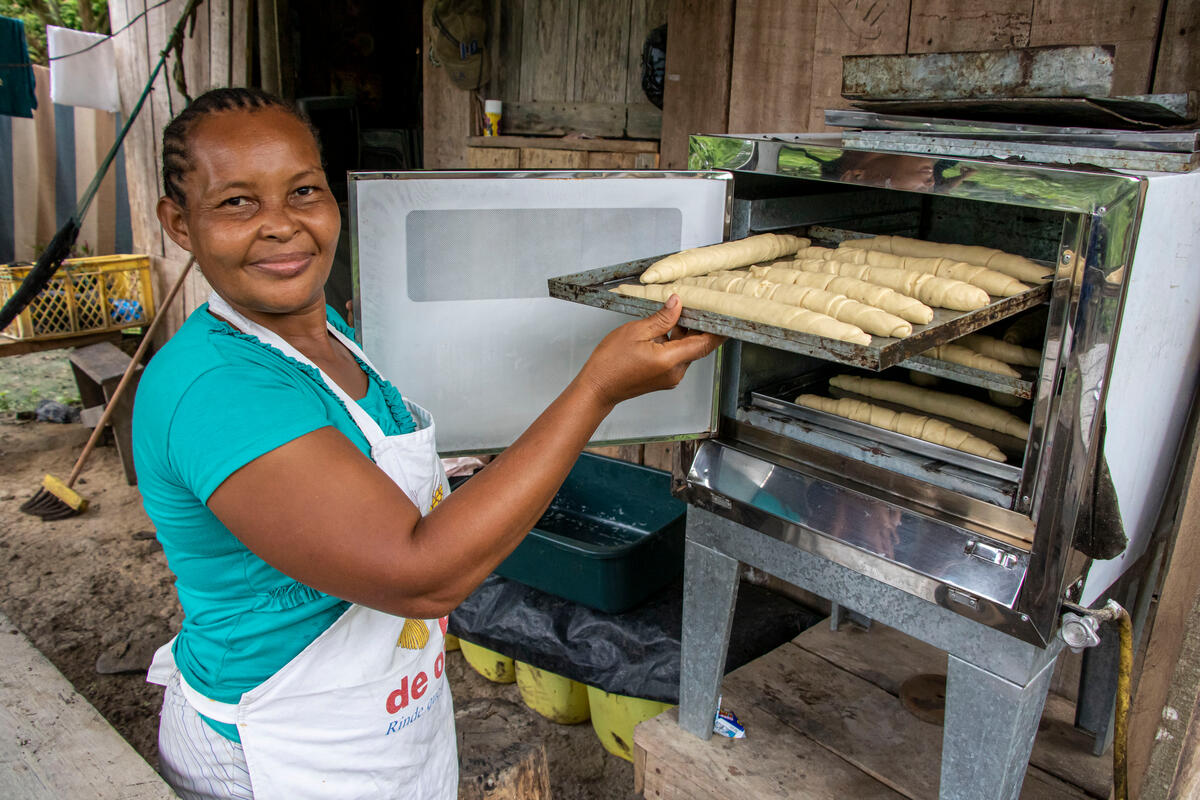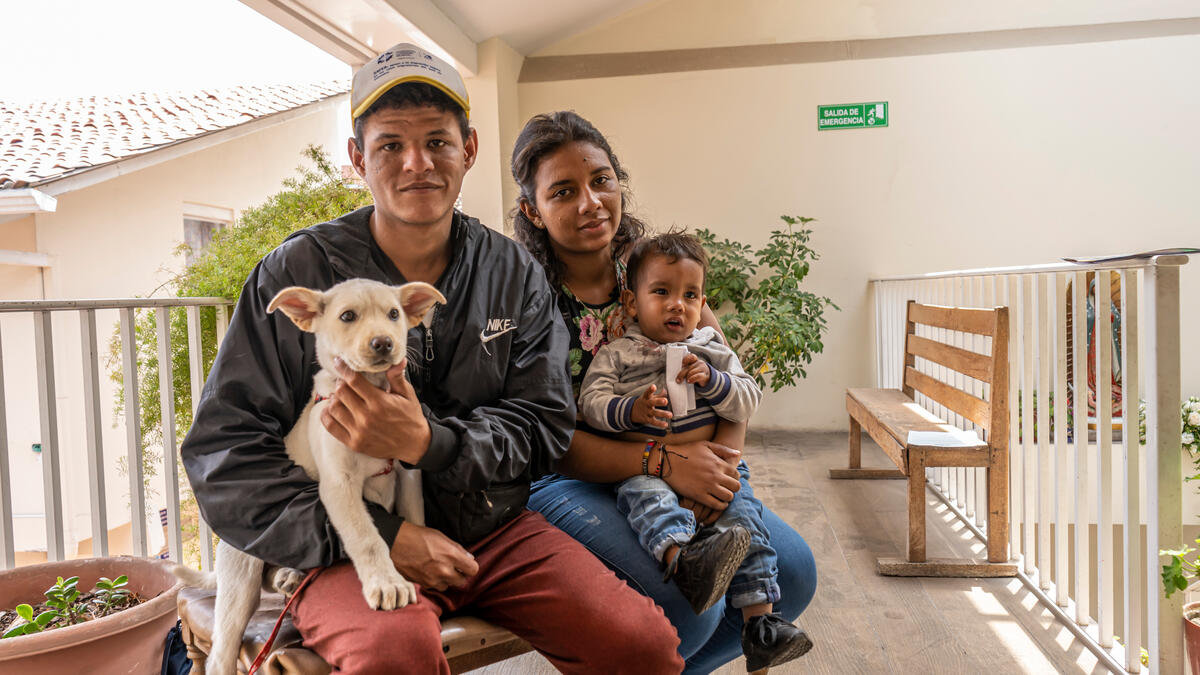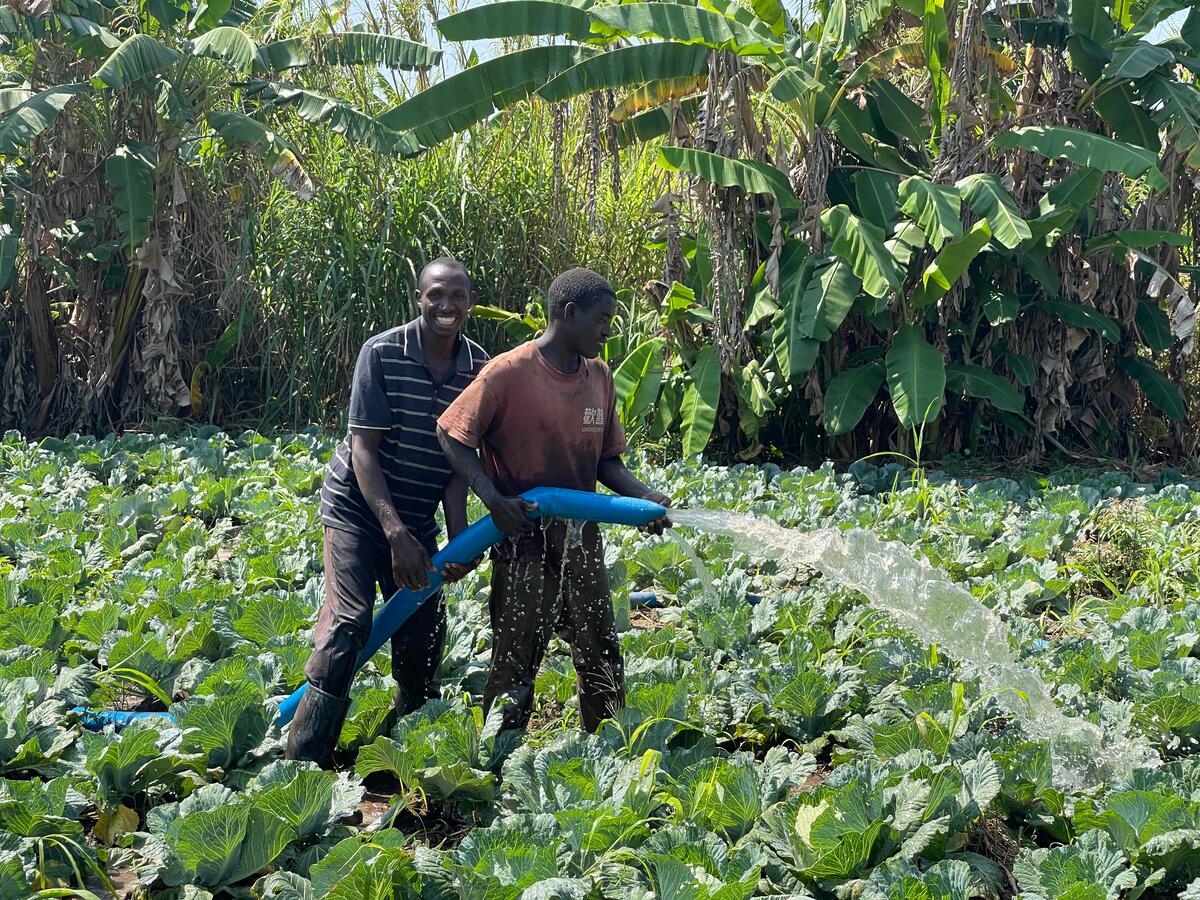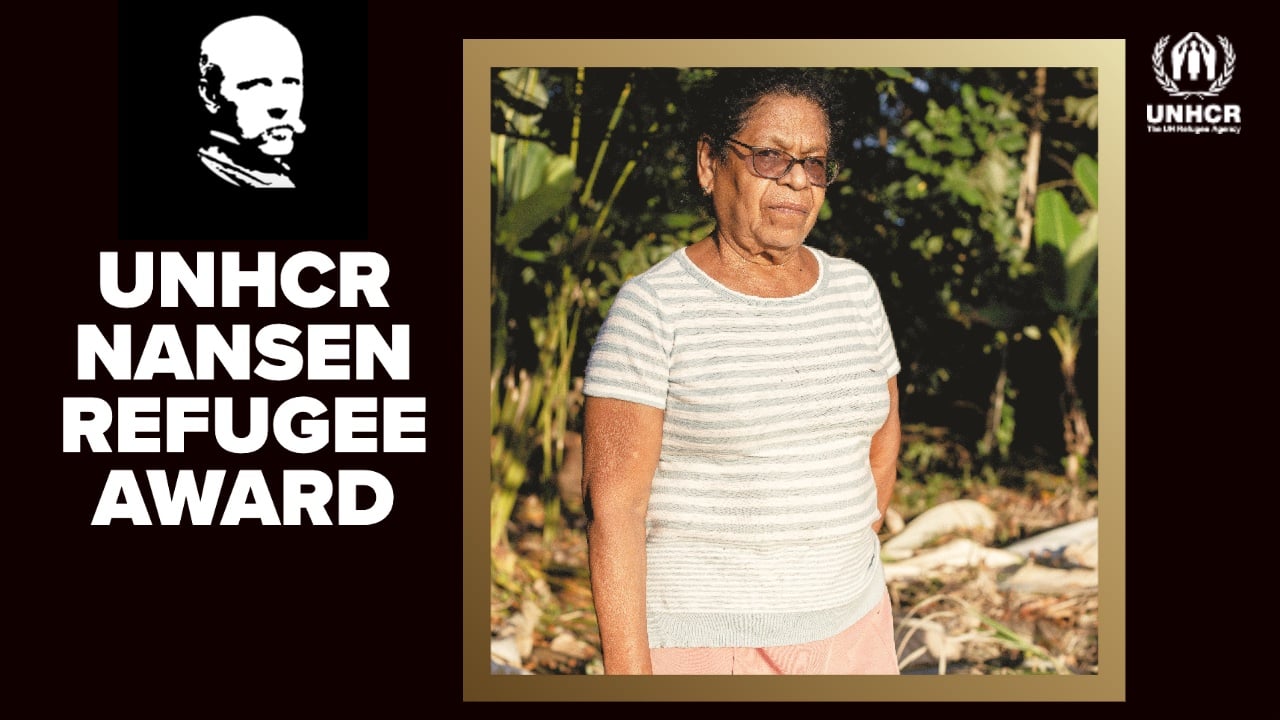The woman with golden hands: Syrian refugee in Jordan finds joy – and a future – in making beautiful things
The woman with golden hands: Syrian refugee in Jordan finds joy – and a future – in making beautiful things
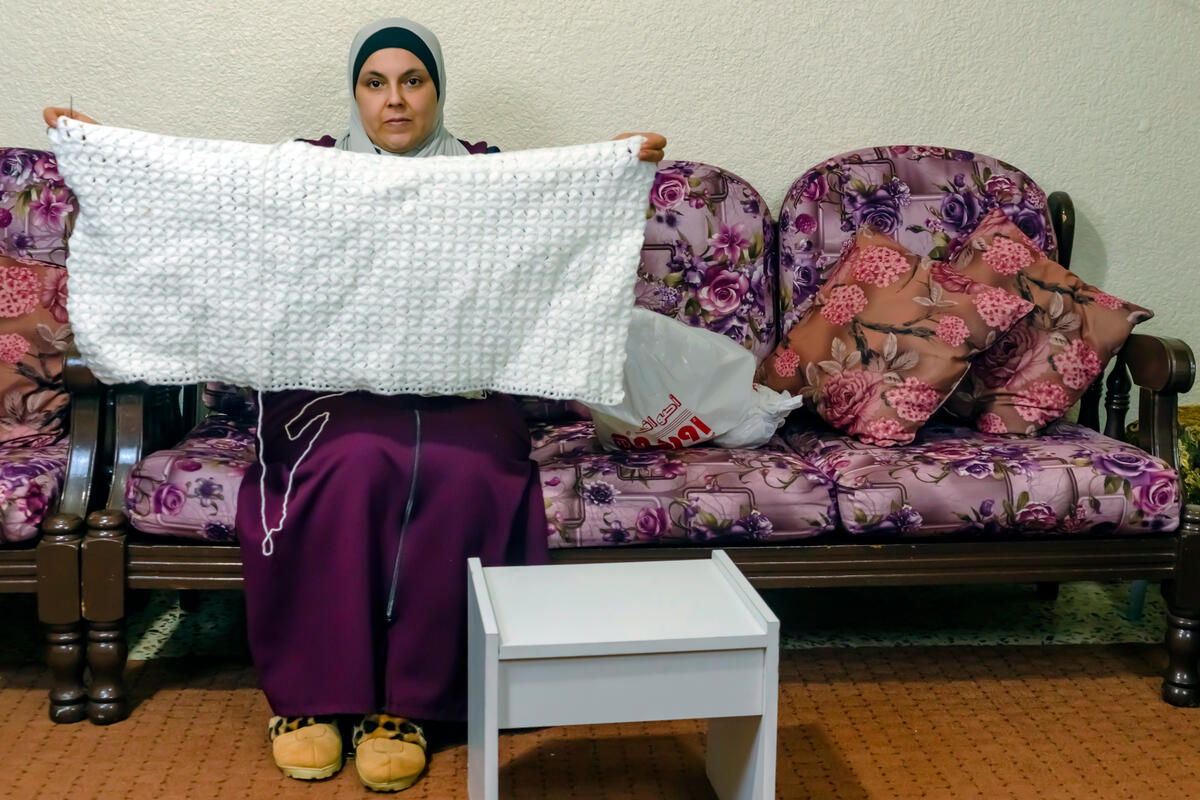
Zuzan Mostafa has golden hands. A Syrian who fled to Jordan in 2012, she discovered she could turn almost anything old and worn into something beautiful, helping her family earn money and rebuild their lives in the process.
Zuzan is one of 5.7 million Syrian refugees who live in neighbouring countries such as Jordan, Lebanon and Turkey, having fled the conflict that began in 2011. Many have faced unemployment and poverty – a situation compounded by the COVID-19 pandemic.
After leaving Za’atari refugee camp, Zuzan moved with her family to the Jordanian capital, Amman. From her home, she makes cushion covers that are eventually sold by IKEA as part of a project run by the Jordan River Foundation, a partner of UNHCR, the UN Refugee Agency, which also sells the items at its regular bazaars.
IKEA partnered with the foundation, which established job training and other economic and social programmes in Jordan in response to the Syrian crisis. Recent data collected by UNHCR in Jordan shows that although most refugees living in urban areas are employed, there remains a strong risk of them falling into poverty.
Below, Zuzan tells journalist and fellow Syrian refugee Hazm Almouzoni about her work and the freedom she feels in being able to support her family. Her story has been edited for length and clarity.
The first weeks after our family left Za’atari refugee camp were the hardest. After all, we had only a couple of mattresses, some blankets, our clothes and a bit of savings.
It was winter then, and we could not afford to rent a furnished flat. We found a cheap empty one. There was some mould on the walls. Hand in hand with my husband, we painted it clean, fixed the broken things and started a new life.
I needed warm winter clothes for my kids. I went to the second-hand clothes bazaar and bought some worn out sweaters, unpicked the wool and made new, modern ones.
Kids, as you know, like colourful things, so I took them with me to the bazaar to choose the colours they liked, which made them happy.
The teachers at my kids’ school loved those sweaters, and asked me to make some for their kids. That’s how I got my first orders and started making my first income.
Around that time, my husband – a master shoemaker – was jobless for a couple of months. He needed to prove himself to potential employers, so he bought some tools and materials and we started making women's shoes at home.
"I learned shoemaking and my husband loved my work and cheered me on."
In the beginning I started helping him out of curiosity. He never asked me to help him, but we were used to helping and supporting each other. After all, we are in a foreign country and no one else would support us. There were no relatives, and we both needed to work to provide for the family.
I learned shoemaking and my husband loved my work and cheered me on. We proved ourselves at the local market where he sold the shoes, and this got him employment. The additional income we made allowed us to buy old, cheap furniture.
The word furniture barely describes what we bought. It was a bunch of wood and metal carcasses, forgotten on a roof in the rain.
Refurbishing the furniture by hand with needle and thread wasn’t easy. I had no tools, but I had my hands and the willingness to do it. So, I bought new fabric and made new covers. That way I got two sets of furniture for a tenth of what new sets would cost.
Women in my neighbourhood liked how I upholstered my furniture, and despite the fact they mentioned many times that shoemaking and upholstery are male occupations, they asked me to refurbish their furniture. Upholstery became my third occupation and a new source of income, and enabled me to buy a sewing machine.
Sometimes when women learn that I’m an upholsterer, they get confused as they are used to seeing male upholsterers. But I believe that people should do any job they physically can. There is no such thing as a male job or female job.

The last nine years of my life proved something my mother used to say while teaching me sewing and knitting when I was a little girl – that mastering a craft is like holding a fortune in your hands. After all, you don’t know when that craft might help you to survive.
Three years ago, I was officially contracted by the Jordan River Foundation to embroider cushions that would be sold at IKEA. Now I have a sustainable job, I’m registered for social security, and I feel more safe.
"There is no such thing as a male job or female job."
My job is to do the embroidery part of the cushion manufacturing process, and there are other women for the additional steps.
I really enjoy this job because it fits me perfectly. It is contractual work from home. It is also official, with labour benefits.
Although the salary is not that big, having a stable income gives me an essential thing in a refugee's life, which is the sense of confidence and stability.
When I think that there are people, somewhere in another part of the world, who enjoy using the pillow I helped to make, I feel my skills are important and meaningful.
Now I’m more independent, and I make an important contribution to meeting our family’s financial needs.
Now I exist.
Hazm Almouzoni was a recent participant in UNHCR’s Refugee Journalist Mentorship Programme, a project created to support refugees, internally displaced and stateless people who want to tell the important stories of today.







